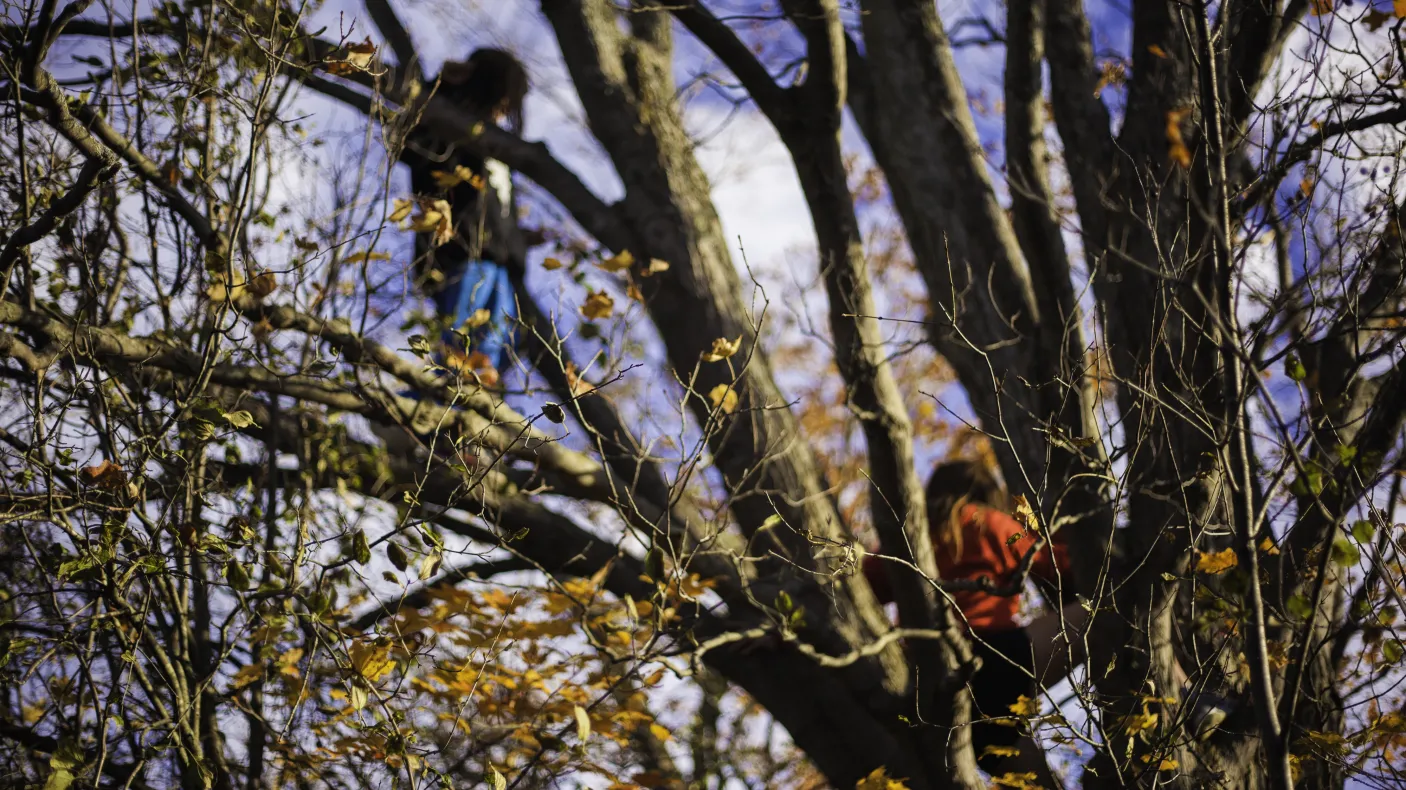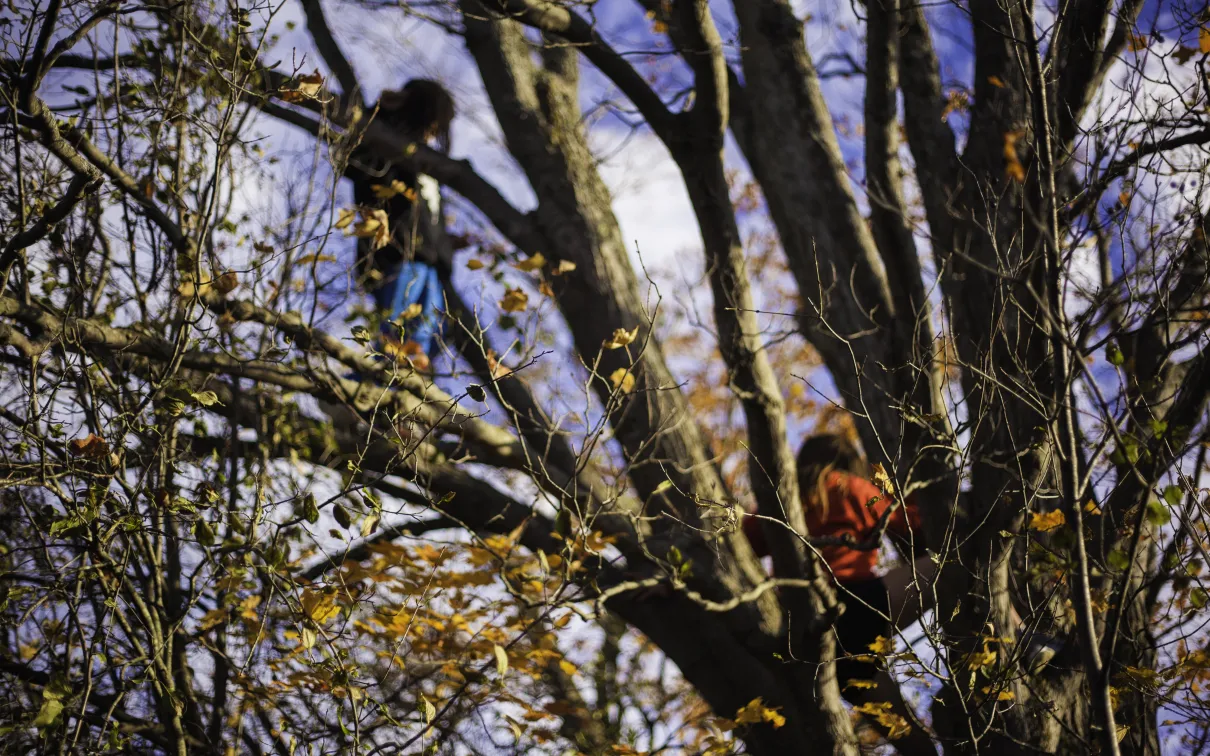Trees for Life in Lakefield
Published
Categories
Author
Blog Post
Guest blog written by Environmental Visual Communication student Fenella Hood
When Rebecca Rose left her home in Leslieville and moved her three young children to the quaint village of Lakefield, she felt secure in the belief that she was improving their lot in life. A small community in South Eastern Ontario's coveted cottage country was just the kind of safe, healthy place to bring up the kids: close to nature, quiet, friendly neighbours, and a modest house on a tree-lined street. Then one day a notice was slipped through her door from the Township of Selwyn announcing her next-door neighbour's severance application to build a second house and increase his selling power. His small corner lot boasts a stand of seven mature trees that will need to be cut down to make room for the build. “It felt like being kicked in the stomach. I don't want those trees to die, and I don't want to tell my kids.” The trees, unique for their size and number on the street, are home-base for secret games of manhunt and Nerf gun wars; their playground shade relied upon. With neighbours rallied, Rose attended the Township meeting to voice her grievances at the loss of trees in the neighbourhood.
Despite the property not meeting the minimum requirements for lot size under the current zoning by-law, the severance request was granted. Mayor of Selwyn Mary Smith explained that the Township follows the County of Peterborough's mandate to increase urban population density.
This policy came out of the government of Ontario's Places to Grow Act which was created to curb urban sprawl, and is refined in The Growth Plan for the Greater Golden Horseshoe. It seeks to protect rural land from being developed by pushing for growth solely in urban areas. The Growth Plan's goal, together with The Greenbelt Plan and Metrolinx’s The Big Move, is to create compact, transit-oriented communities while simultaneously protecting green space and farmland.
Winning the Planning Excellence Award for Reurbanization by the Canadian Institute of Planners for an initiative that improves the social, economic and environmental well-being of a community, The Growth Plan “ensures that families across the Toronto-centred region continue to have access to good jobs, strong communities and a healthy environment.”
With Peterborough County lying on the easternmost point of the Greater Golden Horseshoe, it may be a stretch to call Lakefield a Toronto-centred region, though Selwyn Manager of Building and Planning Robert Lamarre says “The Township can't fly in the face of the province's ultimate decision: the priority is intensifying population in urban areas.”
Lakefield businessman Dick Crawford believes that Selwyn Township's response to the severance application should have been a no. The owner of Crawford Building Consultants Inc. says: “The decision is a way to favour developers. The Township hires their contractors, not tree consultants, to advise on tree maintenance, with little regard for trees.” He says that as a non-compliance lot, the property should be of non-conforming use in The Planning Act.
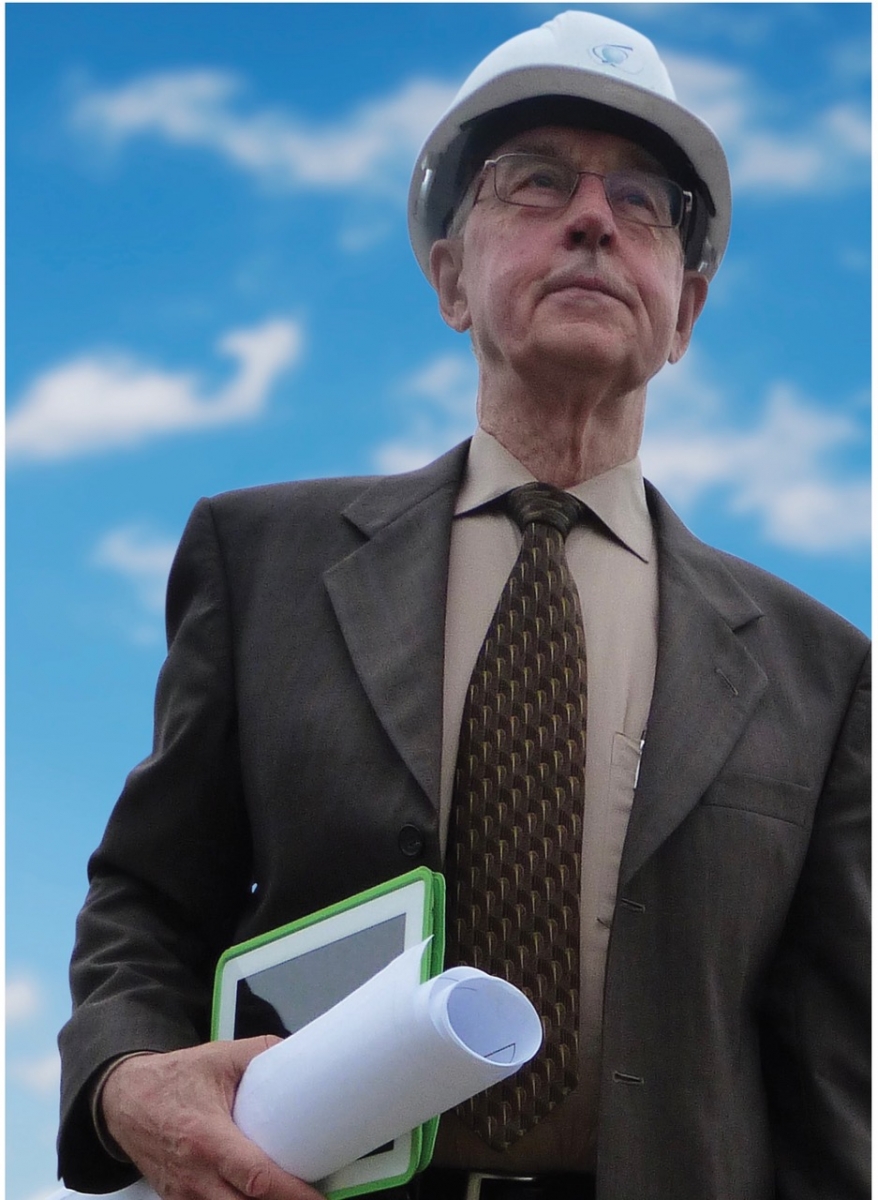
Crawford is Chair of the Selwyn Urban Tree Committee. Last year, the committee created a draft by-law with the purpose to protect urban heritage and healthy trees and canopies in Selwyn Township. Conferring with municipalities in the Greater Golden Horseshoe that have successful tree by-laws in place (City of Guelph, Oakville, and Toronto), the committee provided the Township with guidelines for urban tree sustainability. Though there was support from Deputy Mayor Sherry Senis and several other councillors, the draft by-law was shelved.
Township Planner Jeannette Thompson explains why: “The Township does protect trees. There is a provision in place to ensure that private property owners are not clearing their land, but at the moment it is only rural, not in the towns, and we don't currently have enough staff time to enforce it. The expense of urban enforcement in the case of a tree by-law in town is just not doable.”
However, achieving increased population density while protecting trees may be doable. “Preservation of trees can be done alongside developers' plans,” says Crawford, “by careful placement of buildings, tree removal only within parameters of the building footprint, construction that does not affect root systems, and increased tree planting to fill in site gaps and along roadsides where trees are normally removed for construction activities. We just need to educate home-builders, contractors and architects with regard to this approach.”
For environmental stewardship to work, Crawford says site plan approval needs revision so that trees aren't removed ahead of time. “The current practice is for developers to buy land, clear it, and then fill out the development proposal application,” he says. “A tree by-law could negate this provision, and require a tree advisory committee to review plans for development before trees are lost.”
Trees in Selwyn Township do have some protection. Mike Richardson, the Township's Manager of Recreation Services, says the Township cares about trees and makes great efforts to encourage their growth.
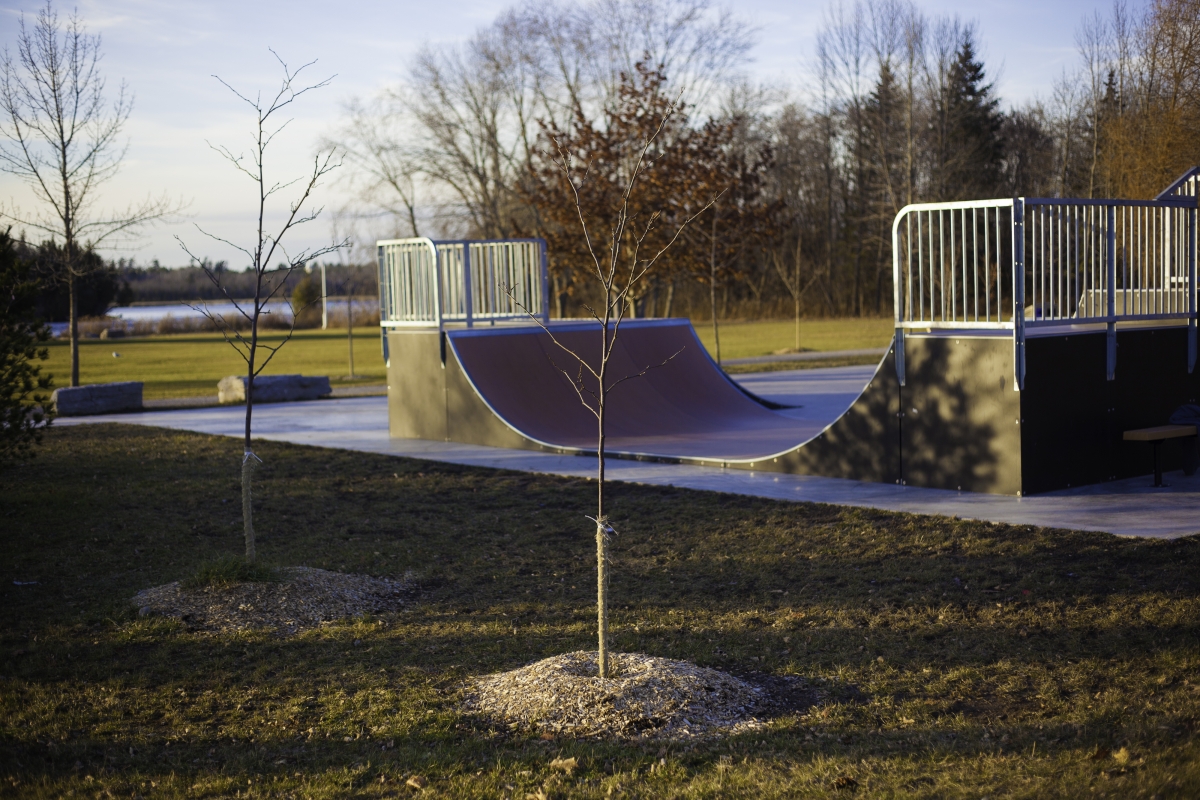
And Selwyn is becoming greener. In 2016, TD Green Friends of the Environment donated 55,000 trees and shrubs to the Township, and the Otonabee Region Conservation Authority donated an additional 15,000 trees. The Township planted 3000 trees at the Ennismore landfill site, and the new Lakefield Skate Park gained over 35 new trees to provide much-needed shade. For Canada150, the ReLeaf Selwyn tree initiative saw 150 maples given to 150 Selwyn residents to be planted on their private properties within public sight. ReLeaf's success will continue in 2018. The Selwyn Community Improvement Plan is currently in its five year review and includes plans for further plantings in Lakefield, though the focus is on the betterment of the downtown and is yet to include residential neighbourhoods. Likewise, the plan's Landscape Improvement Grant is currently only for landowners whose property is used publicly.
Although there is no official policy to protect Lakefield's residential trees, Richardson believes it is a moot point. “We don't need one, we just need to have like-minded people who plan and plant smart. If we require a policy to do these things, we are missing the point. We need it to be the way we think all the time, our innate way of planning.”
Until then, Rose watches the For Sale sign on her neighbour's lawn anxiously. “I feel completely helpless. Where are my rights? I am really disappointed in the Township. I see them as siding with a resident who is leaving our community rather than with those of us that are here to stay. The irony is that there is no way this would have happened in Toronto where trees are protected.”
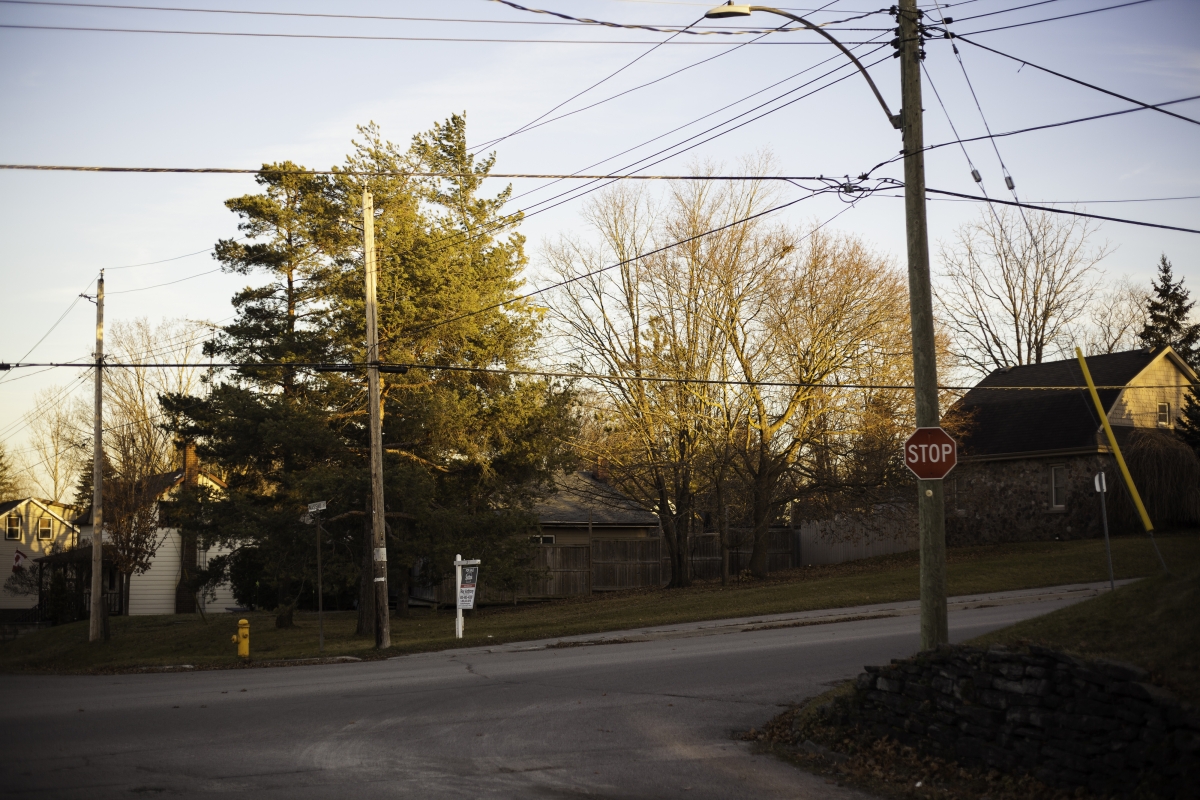
But Rose's plight is familiar to some Torontonians, such as Margaret Atwood who recently had Twitter followers accuse her of NIMBYism towards a proposed condo development in her Annex neighbourhood; one of many developments that some say are essential if Toronto is to supply the demand for affordable housing.
Toronto's housing crisis is one of the reasons that city-folk like Rose are leaving the big smoke in droves, and small town councillors are endorsing densification. Lakefield recently approved a 2,200 home development that will double the number of residences, but while village plans to increase housing are approved, other urban infrastructure such as education and transportation is being taken away: Lakefield District Intermediate and Secondary School, the only rural high school for miles around, had its doors shut last year. And the year before, the only bus service between Lakefield and Peterborough, the 'Worker Bus', was cancelled, crippling Lakefield residents' access to those “good jobs” highlighted in The Growth Plan.
Yet many Greater Golden Horseshoe municipalities are embracing their assets, and recognise trees among them. The City of Waterloo's Urban Forestry Policy states how essential its health and appearance are to the well-being of the city as a whole. They explain how “Trees add graciousness, timelessness and stability to neighbourhoods, and hide unsightly overhead wires. Trees absorb sound, reducing noise levels; provide shade, reducing energy consumption and costs; are natural pollution control devices, capturing potentially harmful airborne substances, absorbing polluting gases, and producing oxygen; their roots stabilise the soil, prevent erosion, and they store water, reducing storm run-off and flooding”. Satellite imagery of the City of Toronto was used to demonstrate that living on a tree-lined street gave health benefits akin to a $10,000 salary rise, moving to a neighbourhood with $10,000 higher median income, or being seven years younger. People who lived on tree-lined streets were less likely to have high blood pressure, obesity, heart disease or diabetes. The study concluded that planting just four percent more trees has a significant benefit to health.
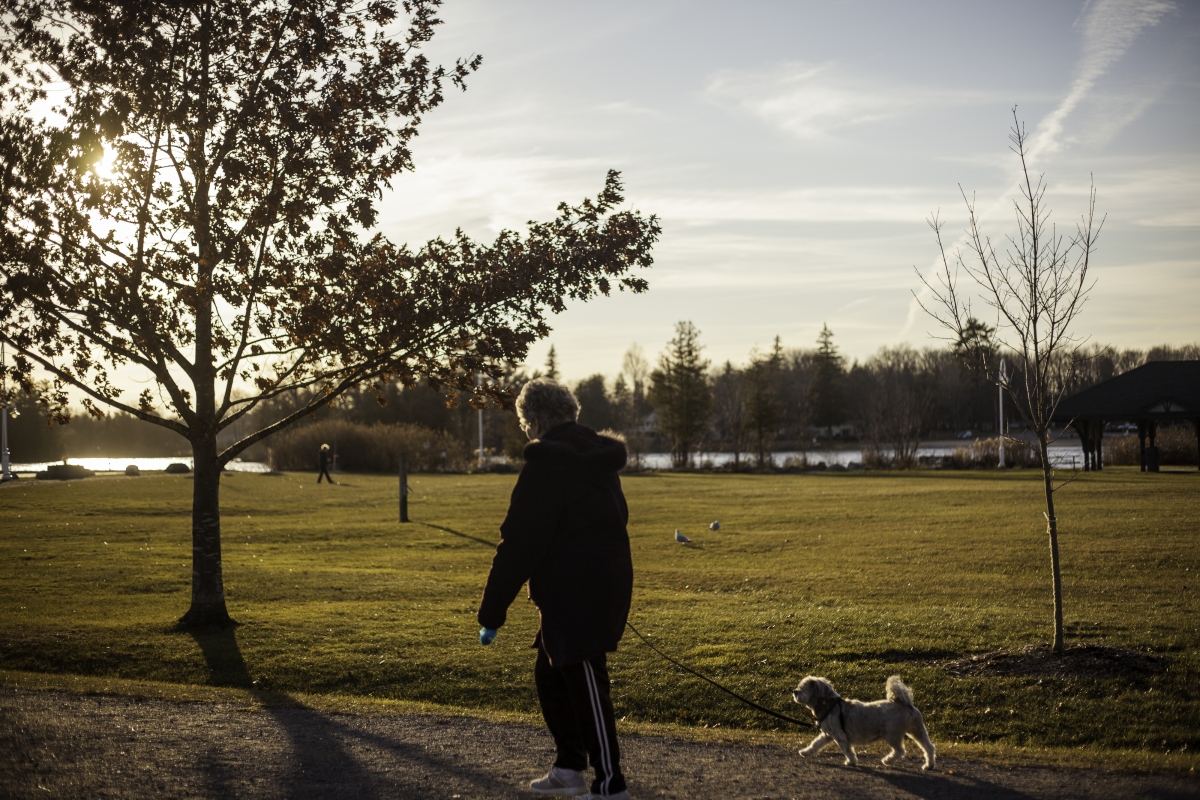
Selwyn Township may be taking note of these benefits. Richardson recently attended Peterborough's first Shade Forum where Dr. Rosana Salvaterra, Medical Officer of Health for Peterborough Public Health, joined with others to share evidence on the importance of trees to our health. The outcome resulted in plans to conduct a Shade Audit and create a by-law for tree protection in the City of Peterborough. Richardson believes that if the City takes up the by-law, it will encourage the County to follow suit.
And it can't be soon enough for Rose. “The Township needs to have a policy in place to protect neighbourhoods now. If the trees go, sight lines go up causing the speed of traffic to go up, and children's safety will be an issue.” The corner lot is directly in front of a busy school bus stop.
The Selwyn Urban Tree Committee hasn't given up on tree protection in Lakefield: their draft by-law is currently under redevelopment. “With community education, we can set a precedent for change and see a regulatory by-law in place that will oversee the preservation of trees,” says committee member Lucille Strath.
The committee would like to see the lot purchased by the Township and turned into a parkette. “There is room for urban forestry in Lakefield,” ends Crawford. “Saving trees is an education process, people don't know the value of trees and we just need to educate them that trees don't only belong to you, they belong to all of us.”
They are hoping to have their by-law passed in 2018.
